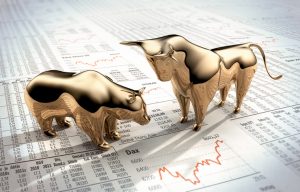Why Dow 28,000 Could Mark That ‘Blowoff’ Top Bears Have Been Predicting
The comments below are an edited and abridged synopsis of an article by Shawn Langlois
Last month, the Federal Reserve began snatching up short-term Treasury debt to the tune of $60 billion per month in response to the repo mess that sent a chill through Wall Street in September.

While it might sound like another round of QE, Fed Chair Jerome Powell wanted to make it clear: It’s not. “In no sense is this QE,” he said.
Charles Hugh Smith, the author behind the “Of Two Minds” blog, isn’t buying it.
“Calling QE not-QE doesn’t make it different than QE,” Smith wrote. “The Fed’s level of panic is noteworthy, as is the absurd transparency of its laughable attempt to conceal its panic.”
And with that panic, Smith believes that the new highs in the stock market could finally mark that elusive blow-off top.
The financial media says the current blowoff top in stocks is not a blowoff top. The irony is that these denials are reliable markers of blowoff tops: the louder the denials, the greater the odds that this is in fact the blowoff top that many pundits have been expecting for some time. And blowoff tops are a lot easier to see in hindsight.
Smith believes we could be seeing one right now, and he bases his opinion on the false impression that the Fed’s ‘omnipotence and omniscience’ will keep this bull market chugging right along.
“If everything’s just peachy in global banking and the US economy, why the sudden mainlining of $300 billion of financial cocaine into the collapsing veins of the financial system?” Smith asked. “Can $300 billion, or $600 billion, or even $1 trillion continue to prop up an increasingly risk-riddled, fragile $330 trillion global bubble in overvalued assets? Just as a matter of scale, the answer is ‘not likely.’”
The Dow closed last week above 28,000 for the first time. The Nasdaq and S&P also rallied nicely. We’ll see how long these levels last.
